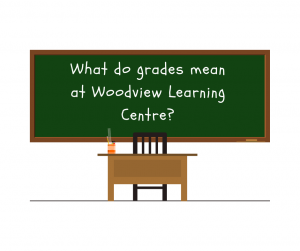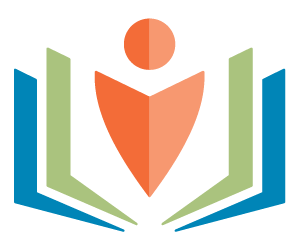By Steven Vovk
Education Coordinator, Woodview Learning Centre
 It is that time of year in our little school with a big heart; the graded report cards have been sent out. Our school has long prided ourselves as being focused on individual education for each child. But what do letters and percentages mean in a private school with a modified, accommodated, or alternative curriculum? When your child is at Woodview Learning Centre, we look at grades being a reflection of their skills (application), communication (whether oral, written, or otherwise), knowledge & understanding, and thinking & inquiry. The way the student demonstrates these skills is based on their individual need and ability. We use baseline, formative, and summative assessments to give us the most comprehensive snapshot of your child’s learning. Below is brief summary of each stream we have here at Woodview Learning Centre and how grading and reporting is usually followed:
It is that time of year in our little school with a big heart; the graded report cards have been sent out. Our school has long prided ourselves as being focused on individual education for each child. But what do letters and percentages mean in a private school with a modified, accommodated, or alternative curriculum? When your child is at Woodview Learning Centre, we look at grades being a reflection of their skills (application), communication (whether oral, written, or otherwise), knowledge & understanding, and thinking & inquiry. The way the student demonstrates these skills is based on their individual need and ability. We use baseline, formative, and summative assessments to give us the most comprehensive snapshot of your child’s learning. Below is brief summary of each stream we have here at Woodview Learning Centre and how grading and reporting is usually followed:
Primary Stream:
Typically students in this stream are between the ages of 4 and 7. At Woodview Learning Centre, we use a direct teach method and focus on language and numeracy ranging from early years to grade 1. Assessment is based on Applied Behavioural Analysis (ABA) and other behavioral sciences assessment models, but is harmoniously fused with the Ontario curriculum. Report cards are written in anecdotal observations but are based on the mastery of programs that are designed based on Ontario guidelines. When parents are reading these, they should read it as a skill acquisition report. Learning can be behaviour improvement, executive functioning improvement, literacy, and / or numeracy. In this stream, we look at all of these learning quadrants. When a parent reads a primary report card, they should keep in mind where the student has come from, where they are at this time, and where do we hope the student will be at the end of the year.
Intermediate Stream:
This classroom has the most diverse range of learners. It begins with students who have transitioned from the primary stream and are beginning a journey into growing learning opportunities. It is also one of the most individualized programs in private and public education. Each report card and each assessment method is geared specifically to the student, both strengths and areas of need. We follow the assessment modules lined out by the Ministry but support it as needed with ABA data. The types of assessment we use are observational, formalized testing, formative (daily), summative (final), and a combination of many others. When a parent receives a report from this stream it will be just for their child. They should read it as an update from the Progress Report in November and a projection of the semester to come.
Individualized Stream:
This is Woodview Learning Centre’s one to one support option offered. Here it is a direct teaching methodology with options for class integration while maintaining that quality one to one assessment. The assessment methods go from ABA focused clinical programs, to more school aligned work based on interest led learning. Like other streams, there are three report cards. Assessments change to meet the needs of the students sometimes daily, without compromising the quality of the data. Based on the strengths and areas of need, there may be a grade mark or an observational data report. Core subjects may or may not be worked on, but if they are reported on it is based on enough data to draw a conclusion. These reports are not so much snapshots of where they have been as it is often difficult to assess these students’ at the beginning of their school year. This report is more of a roadmap on how we, as a team at Woodview Learning Centre, are getting the student to a point where they can be a contributing member of the school community in all areas.
Woodview Alternative Skills Program:
This program is designed for high school students as a transitional group before they would qualify for our LIFE adult day supports program in Hamilton. This program was formed last year and has been heavily researched from similar programs from around the world. The reporting process is again three report cards, each with very different focuses including a focus on skills outside of the classroom in the community. While we do include the Ministry of Education’s rubric assessment range, we also include a 5 level assessment model that parallels the Ministry so that parents can better understand how the program stream works. While grades give a picture of what they achieved for skills demonstrated, the additional levels range from 1 to 5; 1 being no skills present and 5 being a skill that has been mastered or the student can do it independently. While grades are based on a year, the levels are actually based on the student’s entire time in the program.
What does this mean for the parents?
Any grade or assessment model should answer 3 questions:
1) What does this tell me about my child right now?
2) Are they demonstrating these skills independently?
3) What does this tell me about my child for the time to come?
As you begin the process of parent-teacher interviews, meetings, and IEP (Individual Education Plan) reviews, we encourage all our parents to identify specific goals for their child.



